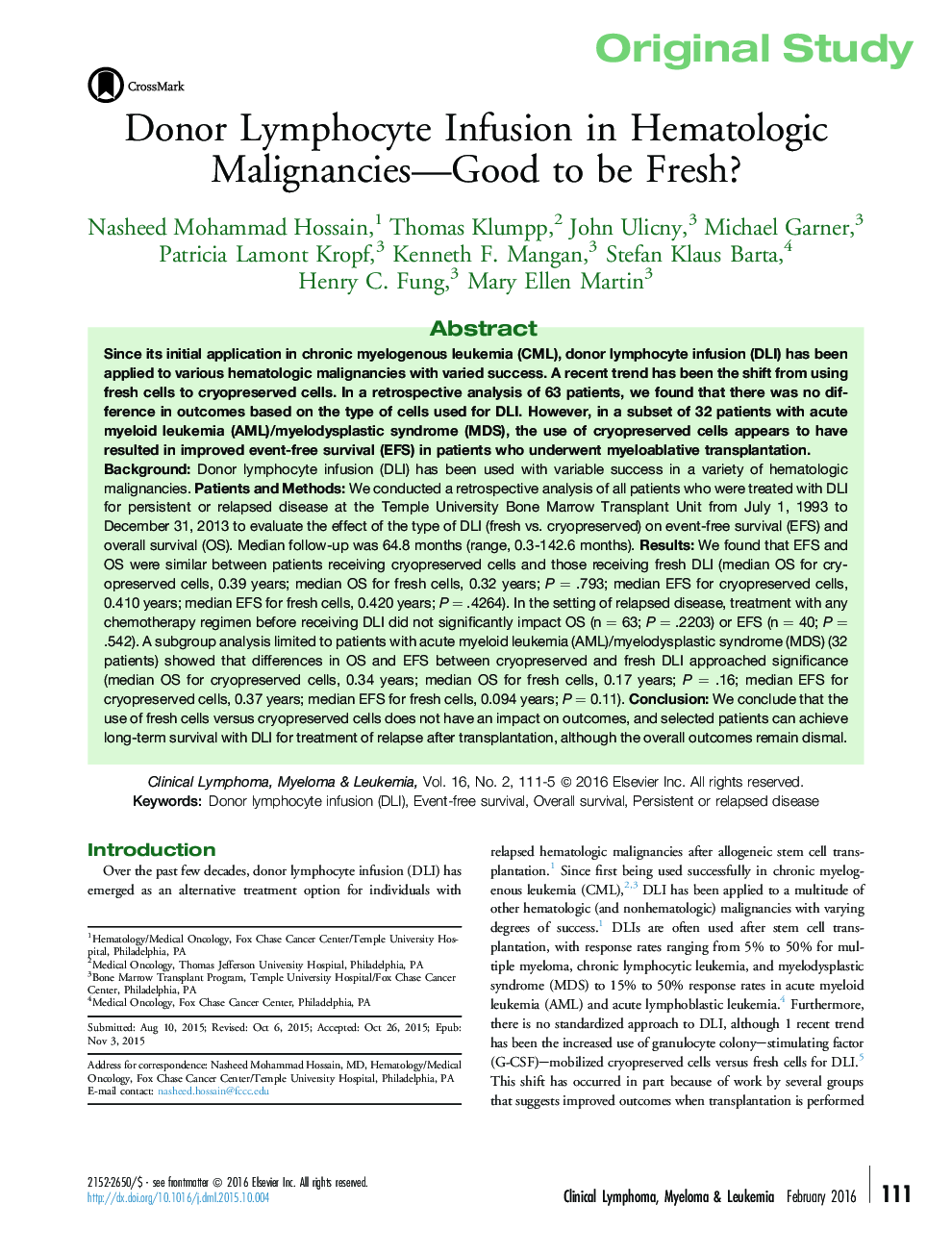| Article ID | Journal | Published Year | Pages | File Type |
|---|---|---|---|---|
| 2754296 | Clinical Lymphoma Myeloma and Leukemia | 2016 | 5 Pages |
BackgroundDonor lymphocyte infusion (DLI) has been used with variable success in a variety of hematologic malignancies.Patients and MethodsWe conducted a retrospective analysis of all patients who were treated with DLI for persistent or relapsed disease at the Temple University Bone Marrow Transplant Unit from July 1, 1993 to December 31, 2013 to evaluate the effect of the type of DLI (fresh vs. cryopreserved) on event-free survival (EFS) and overall survival (OS). Median follow-up was 64.8 months (range, 0.3-142.6 months).ResultsWe found that EFS and OS were similar between patients receiving cryopreserved cells and those receiving fresh DLI (median OS for cryopreserved cells, 0.39 years; median OS for fresh cells, 0.32 years; P = .793; median EFS for cryopreserved cells, 0.410 years; median EFS for fresh cells, 0.420 years; P = .4264). In the setting of relapsed disease, treatment with any chemotherapy regimen before receiving DLI did not significantly impact OS (n = 63; P = .2203) or EFS (n = 40; P = .542). A subgroup analysis limited to patients with acute myeloid leukemia (AML)/myelodysplastic syndrome (MDS) (32 patients) showed that differences in OS and EFS between cryopreserved and fresh DLI approached significance (median OS for cryopreserved cells, 0.34 years; median OS for fresh cells, 0.17 years; P = .16; median EFS for cryopreserved cells, 0.37 years; median EFS for fresh cells, 0.094 years; P = 0.11).ConclusionWe conclude that the use of fresh cells versus cryopreserved cells does not have an impact on outcomes, and selected patients can achieve long-term survival with DLI for treatment of relapse after transplantation, although the overall outcomes remain dismal.
